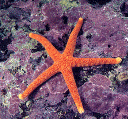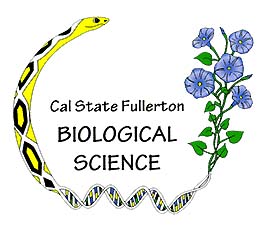

















 Return to Biology 409 Home Page
Return to Biology 409 Home Page
Copyright © 2002-2003 D.J. Eernisse. All Rights Reserved.
Phylogeny Part 1 (Review): CLADOGRAM
CONCEPTS AND TERMS:
Cladogram Terminology: Start with some basic
definitions of terms such as node and branch.
Sister Taxa: Learn what a sister taxon is and
why recognizing them will help you with all of the following steps.
Cladogram Styles: Examples of the same cladogram
drawn in different styles and orientation.
Rotate at a Node: Are the two cladograms identical,
merely rotated at nodes, or are they different topologies?
Polytomies: Are they "hard" or "soft" and
how do they relate to strict consensus estimates?
2. Cladograms Summarize Evolution: A cladogram can be used as a roadmap to the evolutionary history of a group.
CQ1 (1 pt): Look at this "bubble diagram" tree and use it to formulate a short conjecture (about 25 words or less) about what sort of ancestor a bird might have evolved from. Please do this before you proceed further. If you are really a glutton for punishment, attempt to draw a cladogram version of this figure.
CQ2 (1 pt.): Now, repeat what I asked you to do above in CQ1. Hypothesize what sort of ancestor gave rise to birds, only this time use the cladogram views. It might be helpful to start at the node where birds are on the second cladogram, then move down in the cladogram to the next node down, to include more general traits for more inclusive clades that also include birds, and keep moving down until you are at the bottom node of the first cladogram. If you forget what a clade is, remember the "snip rule."
CQ3 (2 pts.): Briefly contrast the descriptions derived from the "bubble diagram" tree (CQ1) and the amniote/dinosaur cladograms (CQ2). What can you conclude about these alternative approaches with respect to making statements about the evolution of traits?
CQ4 (2 pts.): Extend this reasoning to complete the following sentence. The taxon _____________ is the sister taxon of theropods, and these are daughter taxa nested within the higher taxon ____________. One trait that unites members of this higher taxon is ___________________.
CQ5 (2 pts.): Find the node (blue dot) corresponding to the last shared common ancestor of birds in the OLogy cladogram, and complete the following sentence. The sister taxon of birds is _____________________ and within birds, the living but flightless bird, Eudromia elegans, is sister taxon of a clade of extinct birds, __________ and Presbyornis pervetus (according to this cladogram hypothesis). Extra challenge: If it is related to modern ducks, could Presbyornis pervetus quack, according its species card on this web page (click on its name, and then the yellow arrow)?
CQ6 (2 pts.): Consult this Archaeopteryx web page. Name some derived (new) features that modern birds share that are lacking in the ancient bird, Archaeopteryx (and also lacking in other dinosaurs). Next, name some derived features that Archaeopteryx shares in common with those other dinosaurs known as birds.
Return to Biology 409 Home Page
 CSU Fullerton, Biological
Science Home Page
CSU Fullerton, Biological
Science Home Page